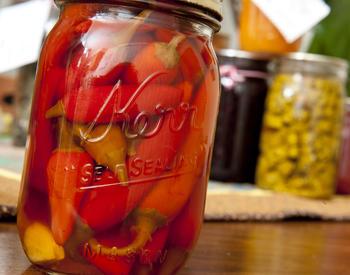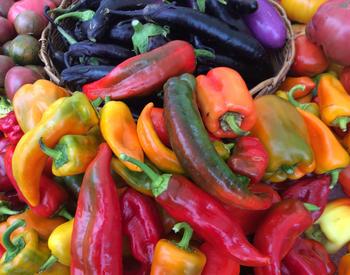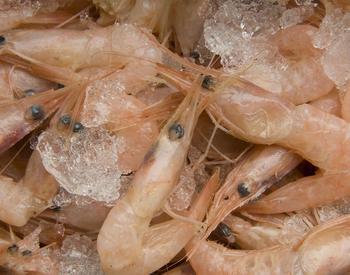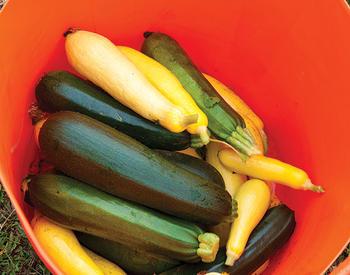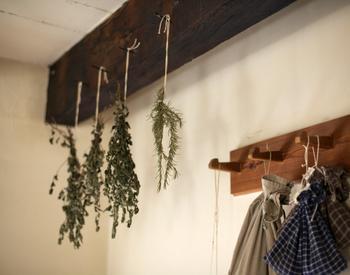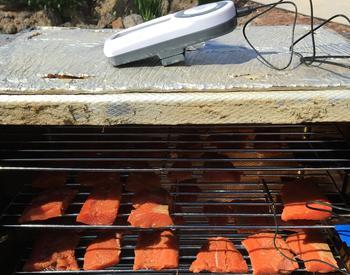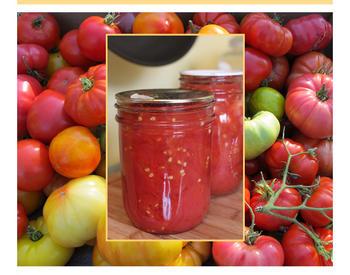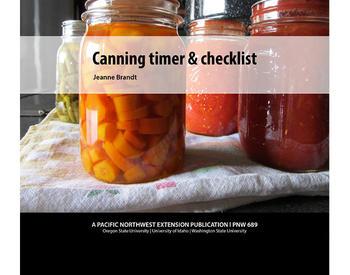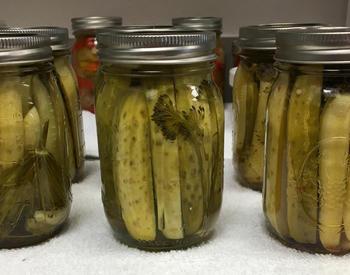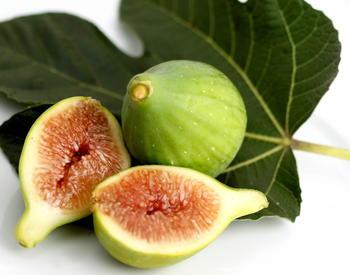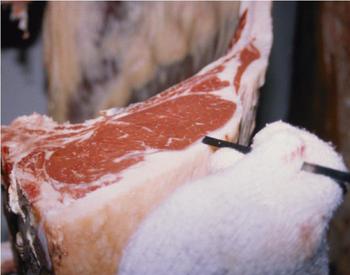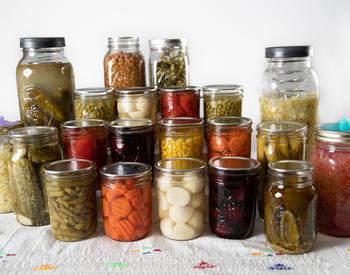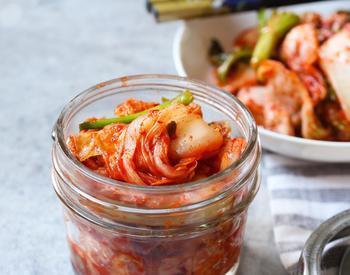Transcript
[Music] My name is Kelly Street, and I'm a registered dietician with the Oregon State University Extension Service Family and Community Health Program in Clackamas County. In this video, we will discuss the Oregon farm direct marketing law and demonstrate how to process pickled hot peppers using a water bath canner.
So, what is the Oregon farm direct marketing law? The Oregon farm direct marketing law, passed in 2012, allows farmers to produce certain low-risk value-added products, such as fruit spreads, pickled, and lacto-fermented fruits and vegetables, and sell them directly to the consumer without a processing license, as long as they grow the produce themselves. This law provides farmers with an opportunity to generate a supplemental income, add variety to their offerings, use up excess produce, and extend their market season.
We have found that farmers need a bit of guidance in implementing the law, including where to find tested recipes and interpreting labeling and record-keeping requirements. That's why OSU Extension is delivering education on the farm direct law through a series of videos and workshops. Information on the law can also be found in the Oregon State University publication, Oregon's Farm Direct Marketing Law: Producer Processed Value-Added Products.
If you plan to produce a product for sale under the farm direct marketing law, you will have to use a tested recipe. A tested recipe has data to support food safety. You will find tested recipes and current food preservation instructions in the USDA Complete Guide to Home Canning, So Easy to Preserve, the University of Georgia National Center for Home Food Preservation, Pacific Northwest Extension Service food preservation publications, as well as other publications from other extension services located throughout the United States.
If you want to produce an acidified food, such as a relish or salsa, using your own recipe, you must first submit it to a recognized process authority for approval. This process is outlined in the mentioned OSU publication.
Today, we will prepare a tested recipe for pickled hot peppers processed in a water bath canner. You will find this recipe in Pacific Northwest Extension Publication 355, "Pickling Vegetables." All peppers are low in acid, meaning that they have a pH above 4.6. Therefore, they must be acidified, have acid added to them if they are to be safely processed in a water bath canner.
Peppers are available in many colors, flavors, and levels of heat. Home canning recipes featuring peppers have become more popular in recent years. Pickled peppers add zip to the palate and the plate, not to mention how beautiful they look in the jars. They can be enjoyed as a snack, as part of an appetizer platter, added to a salad, or as a garnish. They also make popular hostess gifts. Customers will love them, so let's make some.
We begin by assembling our canning equipment and utensils. A water bath canner is a large metal container deep enough that one to two inches of briskly boiling water can cover the jars. The canner must have a tight-fitting lid and a rack. The rack keeps the jars from touching the bottom of the canner and allows the water to circulate freely under the jars. Mason jars designed for home canning are recommended. They come in a variety of sizes, including quarter-pint, half-pint, pint, quart, and half-gallon. They come with self-sealing lids and screw band rings. The lids are one-time use, but the rings can be reused until they become rusty or dented. Other canning utensils that are helpful to have on hand include a jar lifter, a funnel, a bubbler, a timer, hot pads, and a ruler.
Always start by washing your jars, lids, and rings in hot, soapy water. Fill the water bath canner approximately half full with water. Place the jars in the canner to heat up and turn on the heat to simmer.
To shorten our demonstration time, we cut up our peppers and prepared the pickling solution ahead of time. Here's how we did it: We selected and washed a mixture of hot and sweet peppers. We cut the peppers into quarters and removed the cores and seeds. We left the small peppers whole but flattened them. After we handled the hot peppers, we washed our hands thoroughly with soap and water.
To prepare the pickling solution, we combined five cups of 5% distilled vinegar, one cup of water, two teaspoons of sugar, four teaspoons of pickling salt, and two cloves of garlic. We stirred this up and then carried it over to the stove to simmer for 10 minutes. When the time was up, we removed the garlic and turned the heat down to low.
Distilled white vinegar will help retain the general color of the peppers during processing. It must be standardized to 5% acidity. Do not use homemade vinegar in your pickling solution. This is critical to ensure that the equilibrium pH of the final product tests out to less than 4.6. Use canning or pickling salt; do not use table salt as it contains additives that can turn the brine cloudy. You can also omit the salt entirely out of this recipe, as it is strictly a flavoring agent.
Once the jars have heated up, we carefully remove them from the canner using a jar lifter. Now we are ready to pack the peppers into the canning jars. We will leave half an inch of headspace at the top of each jar. Headspace is the space between the inside of the lid and the top of the food mixture or liquid. Too little or too much headspace at the top of the jar can keep a proper seal from forming during processing. Next, we pour the pickling solution over the peppers, being careful to leave that half inch of headspace.
After we've filled all of our jars, we remove the air bubbles from the inside and wipe the lids with a dampened clean paper towel. Then we place the lid and the ring on the jar, tightening it to fingertip tight. Then we place the jars back into the canner, keeping them upright.
Once the jars have been placed in the canner, we add more hot water if necessary to cover the top of the jars by two inches. Finally, we place the lid on the canner, turn the heat to high, and wait for the water to boil. Once the water starts boiling, we will start timing for 10 minutes. You will need to adjust the processing time for elevations over a thousand feet. Local elevations can be found online. You can also contact your County Extension Office for altitude information. Adjust the heat to maintain a gentle rolling boil.
When the processing time is complete, turn off the heat and remove the canner lid. Now, set the timer for five minutes. This additional time helps ensure a vacuum seal. When the timer goes off, use a jar lifter to lift the jars straight up out of the canner and place them on a flat surface covered with a heavy towel. Allow one inch of space between each jar for adequate air circulation. Allow the jars to cool. Don't touch them for 24 hours. Test each jar for a vacuum seal. A lid is sealed if the lid is concave in the center, does not move, and gives a clean ringing sound when tapped. Remove the rings, wipe the jars, and label them following the guidelines outlined in the farm direct law for acidified foods.
The Oregon farm direct marketing law requires that you test
and record the equilibrium pH for each batch of product, along with the processing time and day, and that those records be available to the Oregon Department of Agriculture for a period of three years. For more information, consult the OSU publication Oregon's Farm Direct Marketing Law: Producer Processed Value-Added Products cited at the beginning of the video.
Finally, store the jars in a cold, dark, dry place. Acidified products taste best if allowed to sit for a few weeks before consumption. For best quality, sell or consume within one year of production. Thanks so much for joining us for this introduction to the Oregon farm direct marketing law and demonstration of how to safely pickle a low-acid food for sale to the public. We hope that you have found the content worthwhile. Thank you for watching. For more information on the Oregon farm direct marketing law, you can contact the Oregon State University Extension Service in Clackamas County, the OSU Extension Service Small Farms Program, or the Oregon Department of Agriculture Food Safety Program. [Music]
This video is one of a series of four produced by the Oregon State University Extension Service in Clackamas County that explains the Oregon Farm Direct Marketing Law (OFDML) and illustrates science-based, step-by-step food preservation techniques. In this video we demonstrate how to acidify/pickle hot peppers using a water bath canner. For more information on the OFDML, or food preservation recipes and techniques, you can go to https://extension.oregonstate.edu/business-economics/marketing/oregons-… or https://extension.oregonstate.edu/mfp/publications
